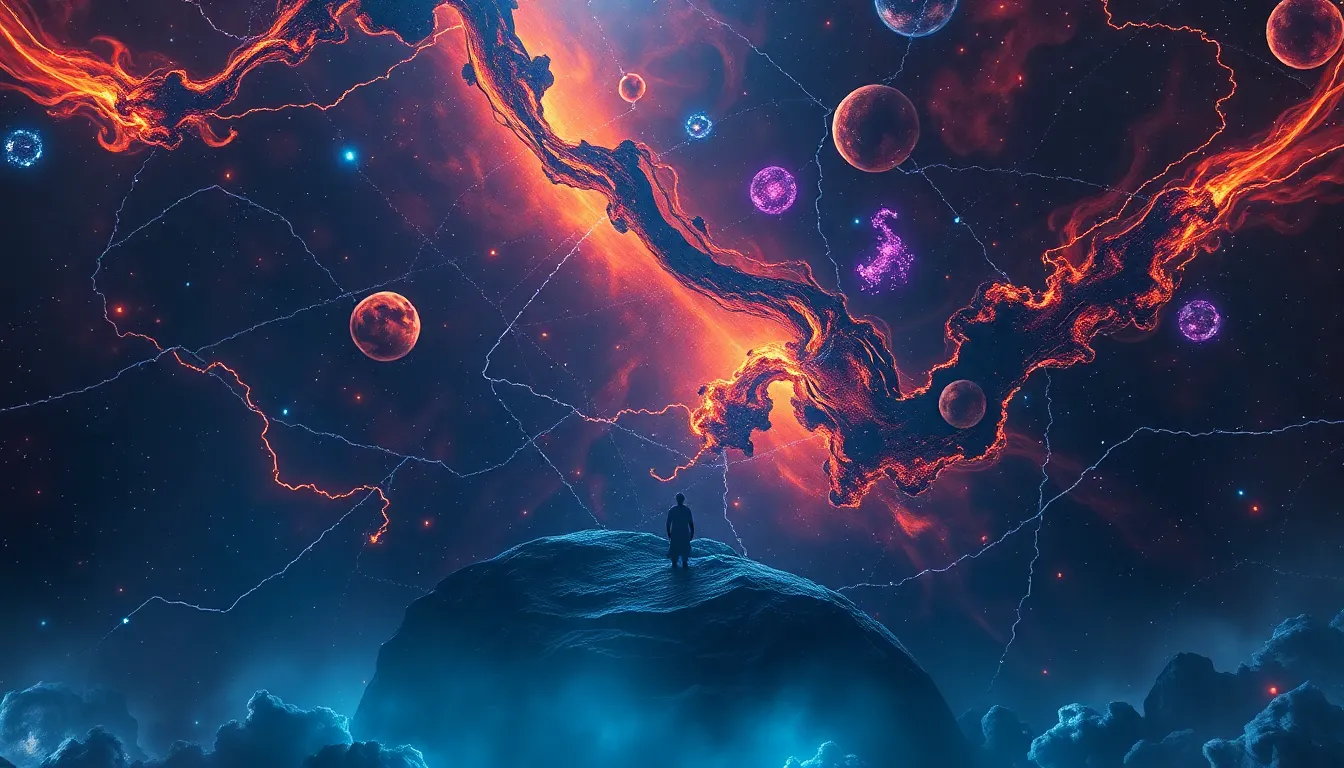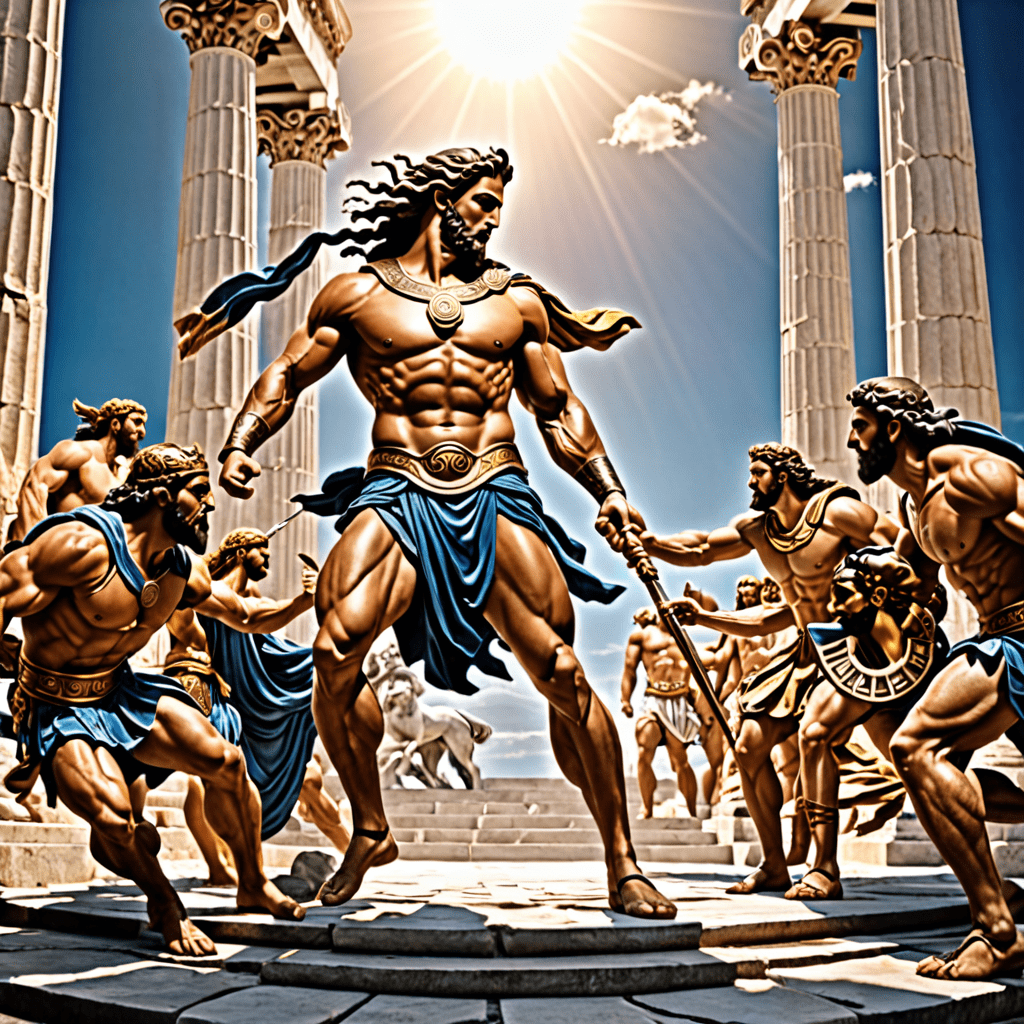The Forgotten Origins: Myths That Explain Our Place in the Universe
Introduction: The Power of Myth in Human Understanding
Myths have long served as a cornerstone of cultural narratives, providing frameworks through which societies interpret their existence and the universe around them. Defined as traditional stories that embody the beliefs and values of a culture, myths offer insights into humanity’s quest for understanding. They attempt to articulate not only the origins of the world but also humanity’s place within it, forging connections between the mundane and the celestial.
The Cosmic Symphony: Creation Myths Across Cultures
Creation myths vary significantly across cultures, each providing unique perspectives on how the universe came to be. For example:
- Genesis: In Judeo-Christian tradition, the Book of Genesis describes a divine creation over six days, culminating in the creation of humanity.
- The Big Bang: In contrast, modern science posits that the universe originated from a singular explosion approximately 13.8 billion years ago.
- Hindu Cosmology: The Hindu tradition speaks of cycles of creation and destruction led by deities such as Brahma, Vishnu, and Shiva.
Common themes emerge from these diverse myths, including the idea of chaos preceding order, the role of a creator or creative force, and the connection between humanity and the cosmos.
Sky Gods and Celestial Beings: Ancient Civilizations’ Views of the Universe
Many ancient civilizations personified the cosmic forces through deities associated with the sky and celestial bodies. Some notable figures include:
- Zeus: In Greek mythology, Zeus ruled the sky and was considered the god of thunder and lightning, reflecting humanity’s awe toward natural phenomena.
- Ra: The Egyptian sun god Ra was central to their cosmology, symbolizing life, light, and the cyclical nature of day and night.
- Quetzalcoatl: In Mesoamerican mythology, this feathered serpent god represented wisdom and the wind, linking the terrestrial and the divine.
These deities not only personified celestial phenomena but also indicated how ancient civilizations understood and interacted with the universe.
The Mythical Interpretations of Stars and Planets
Constellations hold significant importance in many ancient cultures, serving as guides for navigation, agricultural practices, and storytelling. For instance:
- Greek Mythology: The Greeks identified constellations with their gods and heroes, such as Orion, the hunter, and Ursa Major, representing the Great Bear.
- Native American Traditions: Many tribes created intricate star myths, with constellations serving as reminders of their ancestral stories and moral lessons.
- Chinese Astronomy: In Chinese culture, the stars were often associated with imperial authority and were used in astrology to guide emperors in governance.
Celestial bodies were personified in various myths, illustrating humanity’s desire to find meaning in the night sky and its influence on earthly life.
The Underworld: Myths of Life, Death, and the Afterlife
Myths surrounding the afterlife reveal much about a culture’s views on existence and the cosmos. Ancient civilizations often envisioned an underworld that served as a counterpoint to the celestial realm. Examples include:
- Ancient Egyptian Beliefs: The Egyptians viewed the afterlife as a continuation of life on earth, where the soul would journey through the Duat (underworld) before reaching the Field of Reeds.
- Greek Hades: In Greek mythology, Hades was both the name of the god of the underworld and the realm of the dead itself, emphasizing the inevitability of mortality.
These beliefs highlight the connections between cosmology, ethics, and the human experience, reflecting how societies navigate the complexities of life and death.
The Role of Nature: Myths Explaining Natural Phenomena
Myths often served to explain natural disasters and phenomena, providing a narrative that helped communities make sense of uncontrollable events. Examples include:
- Flood Myths: Many cultures, such as the Mesopotamians with the Epic of Gilgamesh and the Judeo-Christian Noah’s Ark, contain flood myths that illustrate divine judgment or cleansing.
- Earthquake Myths: In some cultures, earthquakes were attributed to the movements of giant creatures or the anger of gods, reflecting a need to rationalize the unpredictability of nature.
This interplay between nature and mythological narratives underscores humanity’s desire to find order amid chaos.
Cultural Reflections: Myths as a Mirror of Societal Values
Myths provide a lens through which societal values, norms, and ethics can be examined. They often reflect the ideals and struggles of a culture. For instance:
- Community vs. Individuality: Myths such as the story of Robin Hood emphasize community and social justice, while others, like the tale of Prometheus, celebrate individual defiance against authority.
- Morality Tales: Many myths serve as moral lessons, illustrating the consequences of virtuous or immoral behavior, thus reinforcing societal ethics.
Through these narratives, cultures convey what it means to be human and how one should navigate the complexities of existence.
The Relevance of Myths in the Age of Science
Despite advancements in scientific understanding, myths continue to coexist alongside scientific explanations. This coexistence invites discussion on their relevance today:
- Complementary Narratives: Myths and science can offer complementary perspectives, with myths addressing existential questions while science explains the mechanics of the universe.
- Shaping Perceptions: Myths still influence contemporary views on the cosmos, inspiring literature, art, and even scientific exploration.
This dialogue between myth and science fosters a richer understanding of our place in the universe.
Reviving Forgotten Myths: Their Importance in Contemporary Culture
In recent years, there has been a resurgence of interest in ancient myths, as they are increasingly integrated into modern literature, film, and art. This revival highlights their enduring significance:
- Literature and Film: Works like “American Gods” by Neil Gaiman and films such as “The Shape of Water” draw upon mythological themes to explore contemporary issues.
- Existential Questions: Myths provide a framework for grappling with current existential dilemmas, offering insights into identity, purpose, and community.
This revival not only honors the past but also illustrates how these narratives can provide guidance in navigating today’s complexities.
Conclusion: Embracing Myths as a Path to Understanding Our Place in the Universe
Myths remain a vital part of human identity, shaping our understanding of existence and our place in the cosmos. They encapsulate the collective wisdom of generations, offering perspectives that resonate with our ongoing quest for meaning. As we explore and appreciate these ancient narratives, we uncover valuable insights that can guide us in our modern lives, reminding us of the profound connections between humanity and the universe we inhabit.



